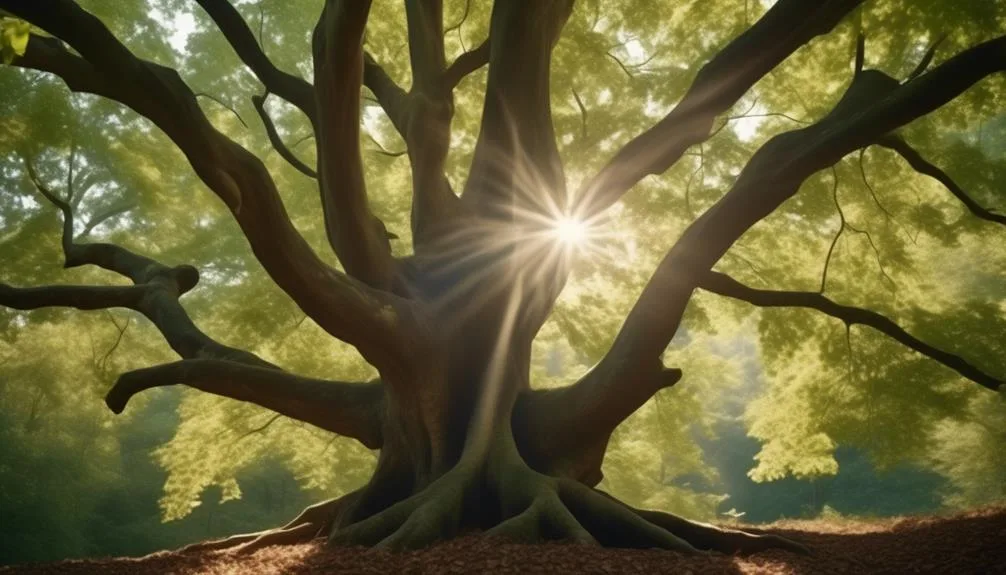Sycamore trees are known for their impressive size and unique bark. This is a common question for gardeners and landowners. Surprisingly, sycamore trees have special qualities that help them adapt to shaded environments.
But can they thrive in the shade? How well can they handle less sunlight? Let's explore the relationship between sycamore trees and shade to understand their potential success in such conditions.
Ideal Growing Conditions for Sycamore Trees
To ensure the optimal growth of your sycamore trees, providing the ideal growing conditions is essential.
Sycamore trees thrive in well-draining, nutrient-rich soil with a slightly acidic to neutral pH level. The ideal soil for sycamore trees is loamy, allowing for proper aeration and moisture retention. When planting, ensure the soil is loose and amend it with organic matter to promote healthy root development.
Additionally, establishing a regular watering schedule is crucial, especially during the tree's early years. Water deeply but infrequently, allowing the soil to dry out slightly between watering to encourage deep root growth. Monitoring the moisture levels in the soil is essential, as sycamore trees are sensitive to both drought and waterlogging.
Tolerance of Sycamore Trees to Shade
If your sycamore trees are currently thriving in ideal growing conditions, you may be curious about their tolerance to shade and how it impacts their growth and health. Sycamore trees exhibit varying degrees of shade tolerance, which can influence their overall development and survival.
Here are some key points to consider regarding the shade tolerance of sycamore trees:
- Adaptability: Sycamore trees possess remarkable adaptability to shade, allowing them to adjust their growth strategies in response to light availability.
- Optimal Conditions: While sycamore trees prefer full sunlight for robust growth, they can persist in partially shaded environments by employing resource allocation and height growth adjustments.
- Health Considerations: In shaded conditions, sycamore trees may display reduced vigor and slower growth rates, but they can still maintain overall health and contribute to the ecosystem.
Understanding the shade tolerance and growth strategies of sycamore trees can help you make informed decisions when managing their environment.
Strategies for Sycamore Trees to Thrive in Shade
Consider implementing strategic pruning techniques to optimize the sycamore trees' exposure to light and promote their thriving in shaded environments.
By selectively removing branches to open up the tree canopy, you can allow more light to penetrate and reach the lower parts of the tree. This encourages the development of new growth and helps the tree adapt to shade conditions.
Additionally, regular tree maintenance such as removing competing vegetation around the base of the tree and providing adequate water and nutrients can further support the sycamore's ability to thrive in shaded areas.
Proper care and attention to the tree's surroundings can make a significant difference in its ability to withstand and even flourish in less than ideal light conditions.
Potential Challenges for Sycamore Trees in Shade
Navigating the challenges of shade is a crucial aspect of ensuring the health and vitality of sycamore trees, especially after implementing strategic pruning techniques to optimize their exposure to light. When it comes to sycamore trees in shade, several potential challenges may arise:
- Root Competition: In shaded areas, sycamore trees have to compete with other plants for essential nutrients and water, which can limit their growth and overall health.
- Limited Sunlight: Sycamore trees require ample sunlight to thrive. In shaded environments, they may struggle to photosynthesize effectively, leading to stunted growth and a weakened immune system.
- Vulnerability to Disease: With limited sunlight and potential root competition, sycamore trees in shade may become more susceptible to diseases and pest infestations, further compromising their overall well-being.
Best Practices for Establishing Sycamore Trees in Shaded Areas
To establish sycamore trees successfully in shaded areas, it's essential to carefully select the right tree species that are well-suited to low light conditions. Shade adaptation is a key factor to consider when choosing sycamore tree varieties for planting in shaded areas. Additionally, incorporating tree diversity can help increase the chances of successful establishment in shaded locations. It's important to select species that are known for thriving in low light environments to ensure the long-term health and growth of sycamore trees. Below is a table highlighting some sycamore tree species suitable for shaded areas:
| Sycamore Tree Species | Shade Adaptation |
|---|---|
| Acer pseudoplatanus | High |
| Acer rubrum | Moderate |
| Acer saccharinum | Low |
| Acer macrophyllum | High |
| Acer platanoides | Moderate |
Choosing sycamore tree species with varying shade tolerances can help promote a more resilient and diverse tree population.
Conclusion
In shaded environments, with proper care and attention, sycamore trees can adapt and thrive, offering their beauty and benefits even in less sunny spots. Understanding their ideal growing conditions and implementing shade adaptation strategies are key to successfully establishing sycamore trees in shaded areas.
How can we cultivate a thriving environment for sycamore trees in the shade?
Mark Hoffman is a dedicated arborist and tree care specialist with over a decade of experience. His love for trees began when he visited Yosemite National Park as a teenager and was awestruck by the giant sequoias. Mark pursued his passion by studying forestry at Michigan Technological University, where he earned a Bachelor of Science degree.
Since then, he has worked tirelessly in the field of arboriculture, helping to preserve and protect trees in his community. His expertise and dedication have made him a respected leader in the industry and a valuable resource for anyone seeking advice on tree care.
